Theodore Lowe, Ap #867-859 Sit Rd, Azusa New York

Theodore Lowe, Ap #867-859 Sit Rd, Azusa New York

A decade ago, marketing automation meant scheduling marketing messages and setting triggers. Today, it’s an intelligent ecosystem powered by algorithms that learn, predict, and adapt faster than any team could manually. We call it ‘AI Marketing Automation’. From automated WhatsApp reminders to adaptive email journeys and smart SMS triggers, AI now orchestrates entire marketing ecosystems rather than just inbox campaigns.
For most teams juggling thousands of contacts and campaigns, doing this manually is like navigating a storm with a paper map. That’s where AI in marketing automation changes everything. It doesn’t just execute rules; it learns what works, when it works, and for whom. Brands now rely on tools like ChatGPT, Salesforce Einstein, and Adobe Sensei for predictive scoring, personalized content, and 24/7 customer interaction.
And for businesses ready to take it further, custom AI agents act as digital teammates, analyzing sentiment, sending tailored messages, or adjusting ad budgets in real time. Connected across CRM, email, and ad platforms, these agents handle the repetitive so your team can focus on strategy and creativity.
Before AI entered the picture, marketing automation worked like a well-designed machine, but one that needed constant manual input. You’d define rules: If a user signs up, send a welcome email. If they click a link, move them to Segment B. It worked, but it wasn’t intelligent. Every scenario was predictable because you had to build it manually.
With AI in marketing automation, that same system learns from data, adapts, and optimizes without being explicitly told what to do. It’s not just automating, it’s thinking within your marketing workflow.
An AI system can detect user sentiment through analysing data points like page visits, dwell time, etc, then trigger a WhatsApp message, follow it up with an SMS reminder, and finally schedule a personalized email, all without manual intervention.

Every intelligent marketing decision begins with data. Traditionally, data was collected and manually segmented, including CRM entries, web analytics, social engagements, and email interactions. AI now automates that collection and cleaning process.
Instead of data analysts manually compiling lists, AI-powered tools like Tactic AI, CleanSwift Pro, or Webscrape AI continuously update user profiles and create living customer personas that evolve as the data grows.
Segmentation used to rely on demographics, age, location, or job title. Today, AI marketing automation tools use behavioral and predictive models to segment users based on what they’re likely to do next.
For example, predictive lead scoring in tools like HubSpot AI, Salesforce Einstein, or Zoho Zia evaluates every lead’s engagement patterns. Instead of “contacts who opened an email twice or opened a whatsApp message once,” AI might find “contacts who paused 7 seconds on a pricing page, visited 3 blogs about ROI, and returned within 48 hours.”
It assigns scores dynamically, recalibrating as new data flows in. That means your best leads rise to the top, not because of fixed rules, but because the algorithm learns which signals actually convert.
This is where AI-powered marketing automation shines. Personalization is no longer about inserting a first name in an email. AI tools like Persado, Jacquard (Phrasee), and Seventh Sense test and generate message variations based on emotional tone, subject line performance, and click probability.
Example: If a subscriber tends to open emails with curiosity-driven questions, the AI adapts future subject lines in that tone. If another user consistently clicks product tutorials, the system prioritizes educational content for them across channels (Email, WhatsApp, Text message).
On websites, tools like Dynamic Yield or Optimizely personalize landing page headlines, visuals, and even call-to-action buttons for each visitor. AI tracks micro-behaviors, how long someone hovers, what they ignore, and makes real-time adjustments.
Timing used to be an educated guess: send emails on Tuesdays at 10 a.m., post on Instagram at 6 p.m. Now AI analyzes each recipient’s engagement window and adjusts delivery accordingly.
AI in marketing automation platforms like ActiveCampaign’s Predictive Sending, or Mailchimp Smart Send Time determines when each user is most likely to open or engage. Instead of one blanket schedule, every email lands at a unique time for every contact. Similarly, AI tools like Ocoya and Soshie work as social media managers for your brand.
For ad delivery, AI tools like Google Performance Max, Meta Advantage+, and Adobe Sensei optimize bids, placements, and formats automatically. They read conversion signals faster than humans could, constantly tweaking campaigns to get better results for the same budget.
Traditional reports told you what happened. AI tells you why it happened and what will happen next.
AI-powered analytics platforms such as Google Analytics 4, Zoho Analytics with Zia Insights, and HubSpot Predictive Reporting identify trends, anomalies, and causal relationships. For instance:
AI then recommends next actions, adjusting a call-to-action, reallocating ad spend, or refreshing stale content. It acts like an analyst who works 24/7, constantly learning from performance data.
For businesses with complex workflows or niche goals, prebuilt tools can only go so far. That’s where custom AI agents come in, purpose-built systems designed around your data, CRM, and audience behavior.
Imagine an AI agent that:
These agents can connect via APIs to your CRM, email, or analytics tools. They don’t replace marketers; they free them. Instead of running reports or toggling dashboards, your team can focus on creative strategy while the AI handles routine optimization.
In short, AI marketing automation isn’t about replacing human judgment; it’s about amplifying it. It turns static systems into living, learning frameworks that refine themselves every day.
Next, let’s see how this approach stacks up against the traditional marketing automation process, and why AI leaves it miles behind.
Traditional marketing automation was built on structure. You’d define rules, design workflows, and trust that consistency would win the game. It worked, to a point. But as customers became more connected and digital touchpoints multiplied, those rigid systems started to show cracks.
Think about a typical campaign setup five years ago. A marketer created three audience segments, built a four-step email sequence or a simple trigger based whatsApp message thread, and hoped the message landed well enough to nudge conversions. Feedback loops were slow, often waiting days or weeks to review performance, analyze patterns, and make adjustments.
AI marketing automation turns that model on its head. Instead of reacting after the fact, it predicts outcomes and adapts in real time. Unlike traditional setups tied to email triggers, AI automation syncs data across CRM, ad platforms, chat apps, and even WhatsApp conversations, making every touchpoint smarter.
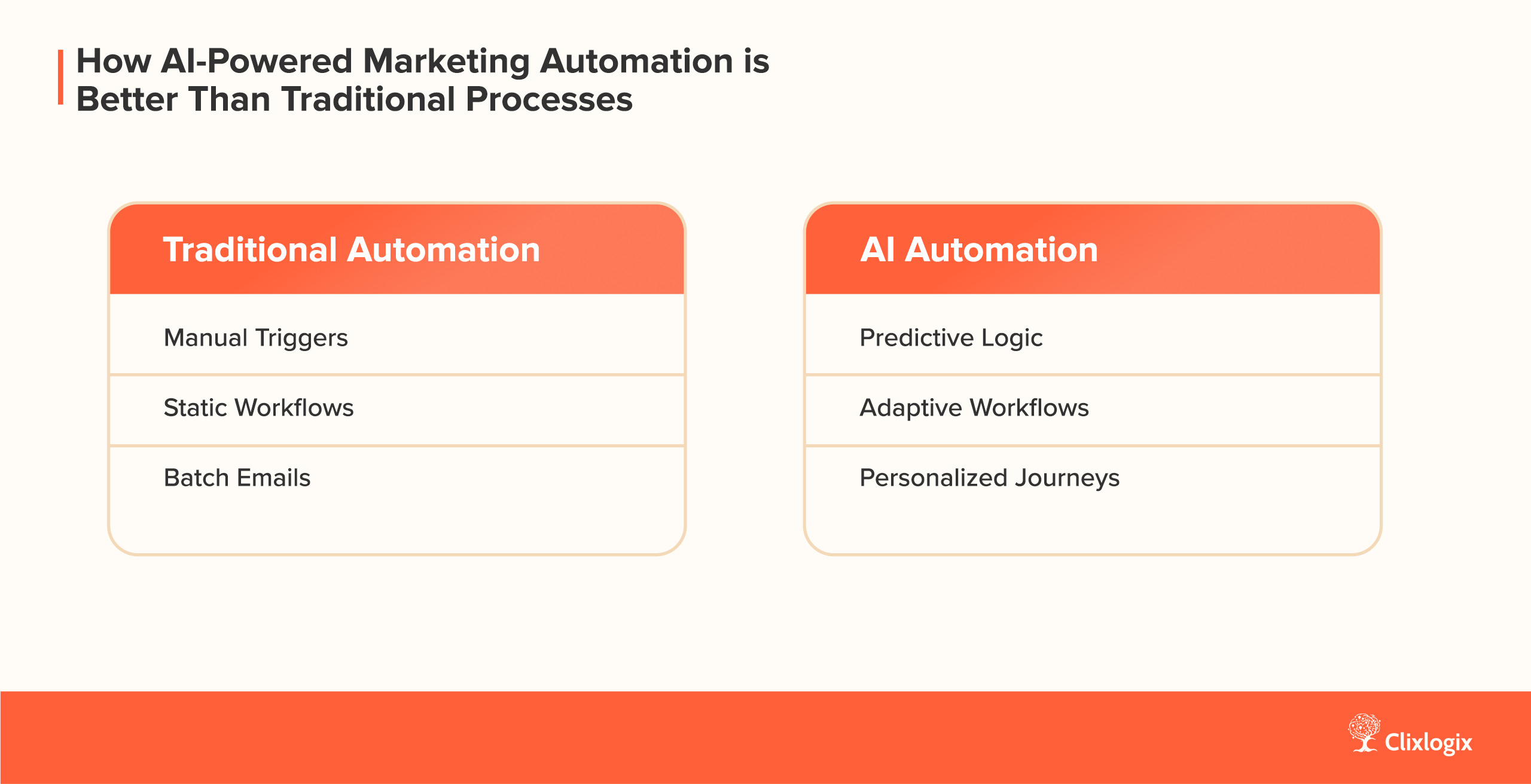
In traditional systems, humans wrote the rules. In AI-powered marketing automation, the system writes its own.
Instead of “If a lead engages with a message two times, move them to the next stage,” AI studies thousands of data points to identify what actually signals intent. It can detect subtle behavioral markers, dwell time, browsing frequency, scroll depth, or even the sentiment of a live chat message, and trigger the right action.
This evolution shifts marketing from rule-based logic to data-driven learning. The more interactions it sees, the smarter it becomes.
Manual automation works fine at a small scale. But what happens when your campaign spans millions of contacts across multiple countries, time zones, and channels?
Traditional automation starts breaking down. Updating workflows or testing variations can take weeks. In contrast, AI in marketing automation handles scale effortlessly.
AI can generate thousands of personalized messages, optimize send times individually, and analyze engagement data for every contact in seconds. It’s like having an army of analysts and copywriters who never sleep, but with one brain coordinating all activity for consistency and learning.
Old-school automation grouped audiences based on surface-level attributes, “Women aged 25–35 interested in fitness.” AI dives deeper.
AI systems use clustering algorithms and neural networks to understand context: who’s most likely to buy today, what content each person prefers, and how sentiment changes over time.
A retail brand, for example, might use AI-powered marketing automation to identify micro-segments like:
Traditional tools can’t see these nuances. AI can, and adapts content, timing, and channels automatically.
This might be the biggest leap. Traditional systems report what happened. AI systems predict what’s next.
Predictive analytics models forecast outcomes based on historical data, whether a campaign will meet its goal, which customer segments are at risk of churn, or which product will perform best next month.
For instance, AI-powered platforms like Salesforce Einstein or HubSpot Predictive Lead Scoring can flag which leads are likely to convert before your team even reaches out. Instead of reacting after results, marketers act before trends take shape.
AI’s ability to automate repetitive decisions means fewer hours wasted on manual oversight. Campaign adjustments that used to take days can now happen in minutes.
It also reduces waste. Instead of blasting one-size-fits-all content, AI pinpoints the right audience and message, minimizing spend on unqualified leads or poorly performing ads.
A 2024 McKinsey report found that companies using AI marketing automation tools saw an average 15–20% reduction in marketing costs while improving conversion rates by 30% or more. Those numbers aren’t futuristic; they’re today’s competitive edge.
Critics often worry AI will replace marketers. In reality, it does the opposite. It amplifies human creativity by removing repetitive work.
Instead of scheduling emails or manually adjusting ad bids, marketers can focus on strategy, storytelling, and customer relationships, areas where human judgment still matters most.
The result? Faster execution, richer insights, and more time for meaningful brand-building.
In short, AI marketing automation takes the same framework we’ve used for years, trigger-based logic, segmentation, reporting, and adds a self-learning brain. It doesn’t discard what worked; it enhances it.
Next, let’s break down the practical side: the AI marketing automation tools that make all of this possible.
AI has made marketing automation smarter, but only when the right tools are in place. The current ecosystem is filled with AI marketing automation tools that promise results, but not all are created equal. What separates effective platforms from overhyped ones is how deeply AI is integrated into their core, not whether they use AI as a buzzword.
Let’s look at tools that actually deliver intelligence, not just automation.

HubSpot has quietly evolved from a CRM and workflow tool into an AI-powered marketing automation ecosystem. It uses predictive lead scoring, automated content recommendations, and behavior-triggered workflows. The platform’s AI analyzes engagement history to suggest optimal send times and content for the emails, WhatsApp messages and text messages for marketing, saving marketers hours of trial and error.

Salesforce Einstein brings predictive intelligence to marketing campaigns. It evaluates customer behavior across channels, then recommends next-best actions. Einstein’s Journey Builder even adjusts communication paths based on how recipients respond, turning static workflows into adaptive, learning systems.

Zoho’s unified marketing platform, Marketing Plus, combines email, whatsApp, SMS, social, surveys, webinars, analytics, and automation under one dashboard, powered by its AI assistant Zia. Zia learns from campaign data to:
What makes Zoho unique is that it democratizes AI automation, giving small and mid-size teams the same predictive and personalization capabilities typically reserved for enterprise tools.

Adobe Sensei’s integration into the Experience Cloud brings deep personalization capabilities. It analyzes audience attributes, buying intent, and emotional tone in visuals and copy. Marketers use it to build micro-segments and deliver content tailored to each customer’s digital footprint, a classic example of AI in marketing automation that balances creativity and data science.
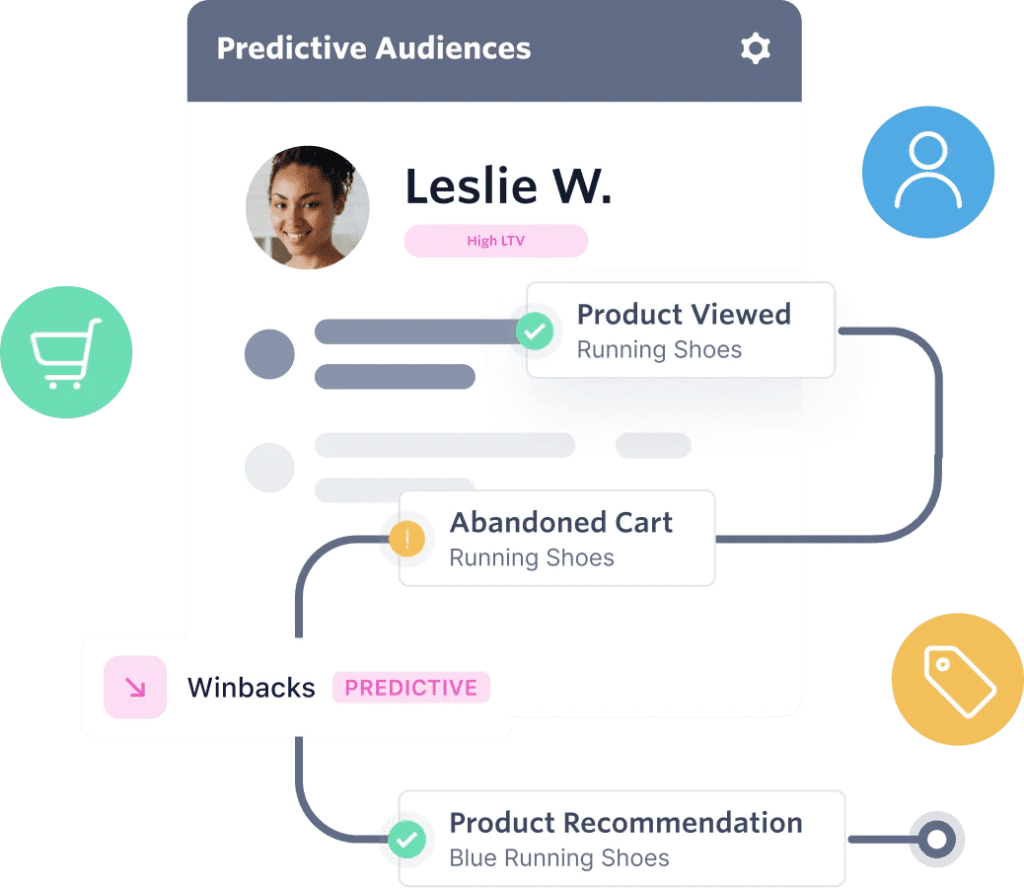
Twilio Segment is one of the most versatile AI marketing automation tools for orchestrating multi-channel engagement. Unlike traditional platforms that focus primarily on email workflows, Twilio connects WhatsApp, SMS, voice, email, and in-app push notifications into a single intelligent loop.
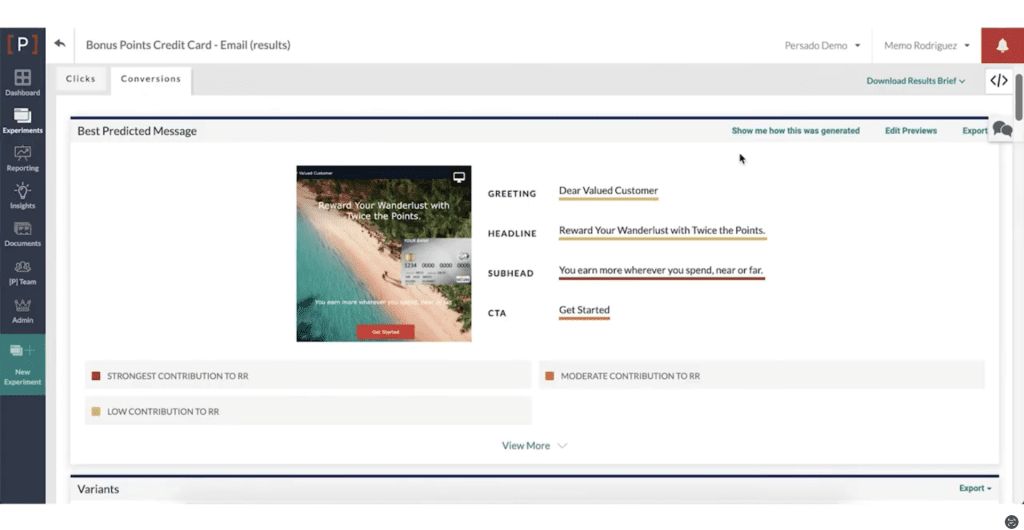
Persado uses natural language generation to craft emotionally intelligent marketing messages. It tests hundreds of subject line variations, learning which tone, curiosity, urgency, and empathy drives the most engagement for each audience segment.
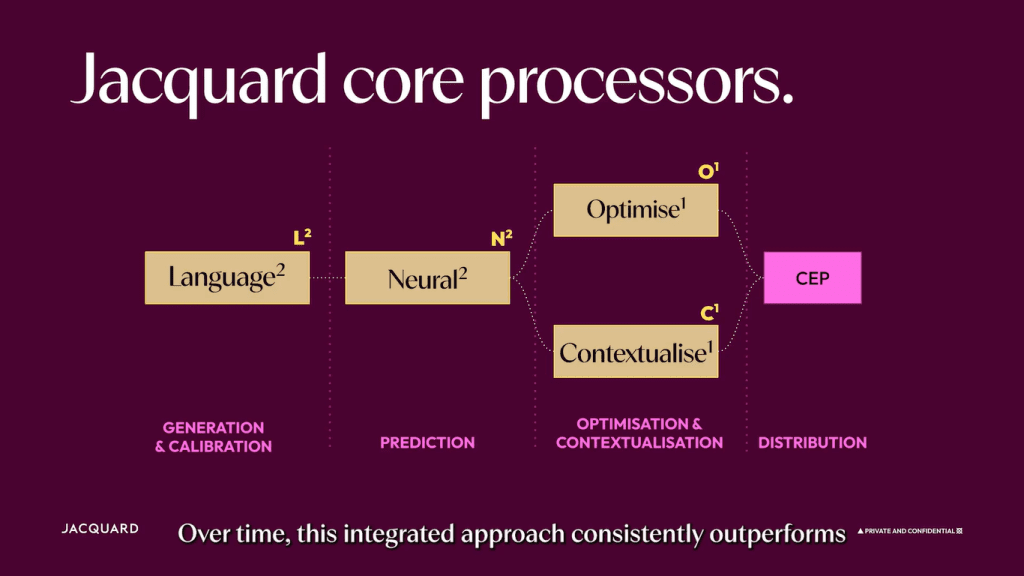
Similar to Persado but laser-focused on email and SMS, Jacquard’s generative AI learns your brand voice and optimizes communication over time. Instead of A/B testing two subject lines, it can test dozens, quickly identifying what improves open and click rates.
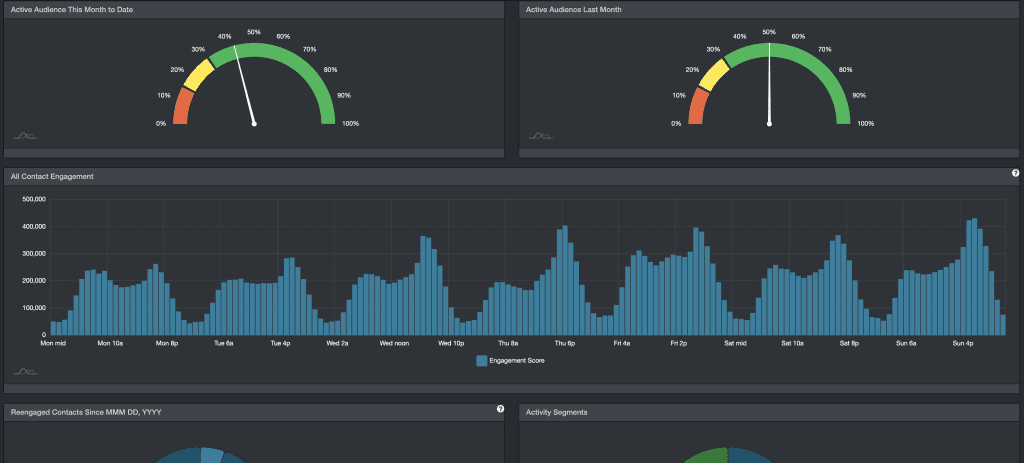
Perfect for email-heavy campaigns, this tool uses behavioral data to send messages at the ideal moment for each subscriber. It’s not guesswork; it learns from your recipients’ actual open and click habits. This “right time, right person” logic has become a defining feature of AI-powered marketing automation.
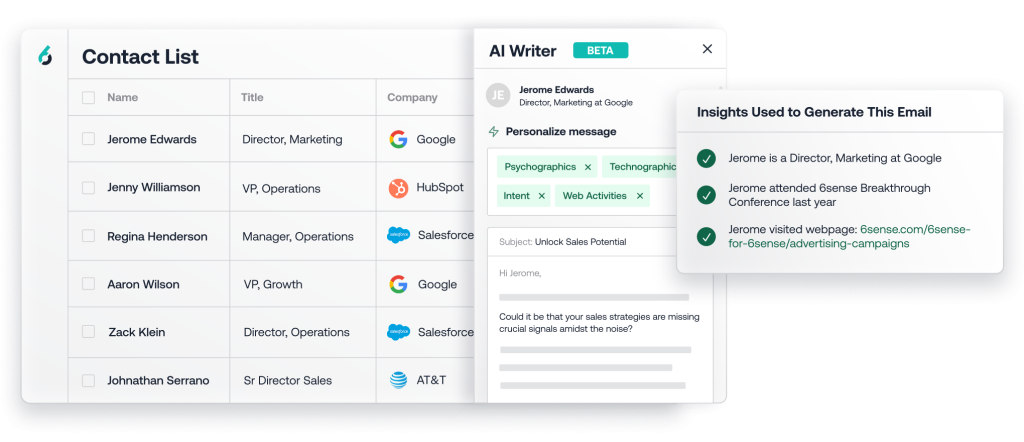
A leading predictive analytics platform for B2B marketing, 6sense identifies anonymous website visitors, scores intent, and prioritizes accounts most likely to convert. It’s ideal for sales-driven organizations needing precision targeting without manual qualification.
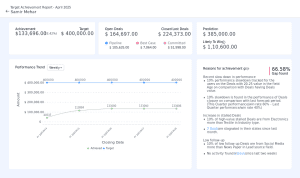
Zia, Zoho’s built-in AI assistant, helps automate lead scoring, forecasting, and sentiment tracking. It integrates across Zoho Campaigns, CRM, and Analytics, giving smaller teams the benefits of enterprise-level automation.
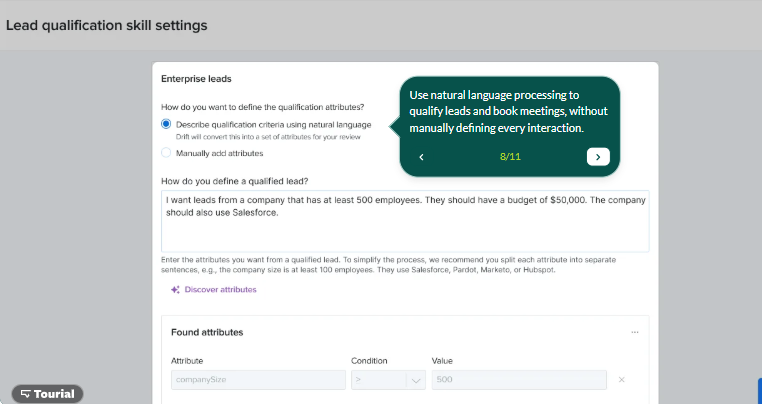
Beyond chatbots, Drift’s AI-powered system qualifies leads in real time, books meetings, and integrates directly with CRMs. It combines conversational marketing and automation, reducing lead response time to seconds.

Google’s Performance Max campaigns rely on AI to automate targeting, creative rotation, and budget allocation across YouTube, Display, Search, and Maps. It reads conversion signals in real time, optimizing for performance, not clicks.

This Meta platform analyzes ad variations, audience preferences, and engagement behavior to automatically allocate budget toward top-performing creatives. For brands running multiple ad sets, this is one of the most accessible examples of AI in marketing automation done right.
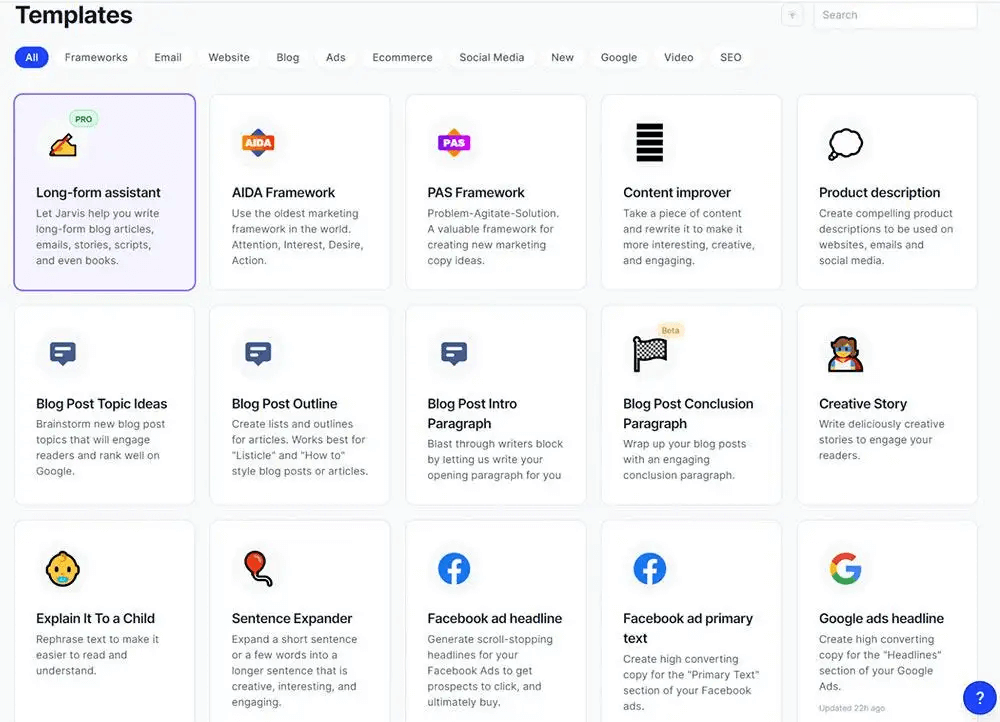
AI writing assistants like Jasper go beyond content creation; they integrate with marketing platforms to generate personalized ad copy or landing page text based on campaign goals, tone, and previous results.
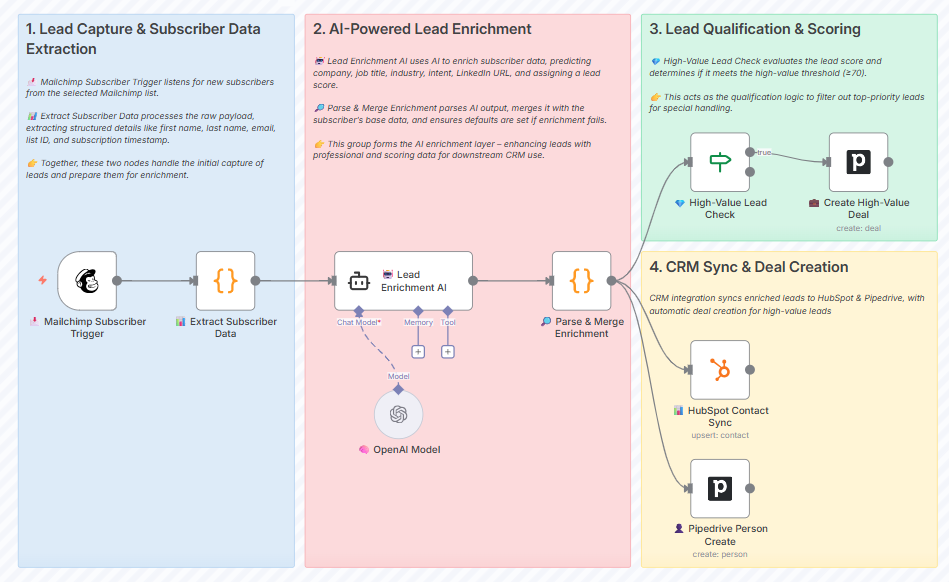
For organizations that operate in unique niches or have multi-system workflows, pre-built platforms sometimes fall short. This is where AI marketing automation agencies or in-house teams create custom AI agents, intelligent scripts, or micro-services that tie into CRM, email, and ad systems.
Examples include:
These custom solutions bridge gaps between tools, especially for enterprise environments where data lives across multiple silos.
Selecting tools shouldn’t start with brand names; it should start with your process. The best results often come from combining:
AI marketing automation isn’t a single product; it’s an ecosystem. When these systems connect, the whole becomes smarter than the sum of its parts.
When people ask me what the hardest part of AI marketing automation is, I don’t say “technology”.
It’s trust.
Not trust in AI itself, but trust in what we let go of.
Most teams I’ve worked with hesitate at first. They’ve spent years perfecting their manual campaigns, tweaking copy, defining rules, building lists, and the idea of an algorithm making those choices feels like handing the steering wheel to someone they can’t see.
But every time we’ve leaned in with patience and precision, the results spoke louder than the fear.
I’ve seen too many businesses buy expensive tools before understanding their data. The truth? AI feeds on data quality. If your CRM is full of duplicates or inconsistent entries, even the smartest AI will stumble.
Our best results came when we invested the first few weeks purely in cleanup, consolidating data sources, mapping customer touchpoints, and ensuring every lead carried the same structure across systems. Once we connected Zoho CRM, Campaigns, and Analytics into one loop, Zia’s AI predictions suddenly became accurate, not because the model changed, but because the inputs finally made sense.
Clean data isn’t glamorous, but it’s the foundation that makes AI shine.
AI doesn’t solve confusion; it scales it. If you’re unclear about what success looks like, AI will only amplify that uncertainty faster.
I’ve worked with teams that automated email sequences without a clear end metric, “just to nurture leads.” But what does that mean? Engagement? Bookings? Purchases? Once we tied automation directly to measurable outcomes, like reducing lead response time or improving conversion rate from demo to deal, the systems started showing real value.
Before turning on any AI-powered marketing automation, define:
AI performs best when it has a target, not a vague intention.
There’s a sweet spot between automation and human instinct.
AI can tell you what’s working, but not always why. It can detect that one subject line performs better, but only a human can sense whether that tone aligns with the brand’s deeper values.
When we introduced AI-generated content suggestions into a client’s email campaigns, the initial results were impressive: higher open rates, better click-throughs. But some messages felt impersonal, almost too polished. So we built a human review layer: writers could edit or reject AI recommendations, feeding their changes back into the system. Within a few weeks, the AI started mimicking their style more closely, blending consistency with authenticity.
The best marketers I know treat AI like a skilled teammate: capable, fast, but still guided by human judgment.
AI’s biggest advantage is adaptability, but only if you let it learn gradually.
When we rolled out predictive lead scoring for one client, we didn’t replace the old system overnight. We ran both in parallel for 30 days. This side-by-side comparison built internal trust; the team could see how AI was learning and improving accuracy with each iteration.
In one campaign, our automation didn’t just send follow-up emails, it triggered WhatsApp reminders and SMS summaries based on user inactivity, cutting manual effort by half.
By day 45, the AI model was outperforming the manual system by 18%. That’s when we turned off the old workflow, not because we believed the hype, but because the data earned our confidence.
Change management isn’t a switch; it’s a series of proofs.
Another overlooked piece of AI marketing automation is transparency. If your system uses AI to make decisions, whether it’s sending discounts or prioritizing leads, make sure people know why.
I always advise documenting every AI-driven decision rule. It not only helps during audits or compliance checks but also protects the team’s credibility when clients ask how personalization works.
And one more point, AI learns from behavior, which often includes personal data. Always anonymize sensitive information, respect consent, and comply with local privacy laws. The most powerful marketing strategy is one that builds trust, not just conversion.
The more advanced your automation becomes, the easier it is to forget there are real people behind every click and view. That’s why our internal rule is simple: no automation without empathy.
Every AI decision, timing, content, and tone should enhance a person’s experience, not just optimize metrics. I’ve seen campaigns where an algorithm scheduled emails during local holidays or sent urgent messages during regional crises. AI didn’t know better; it was doing its job. The lesson? Human context must always supervise machine logic.
AI may be the engine, but empathy is still the driver.
Over the years, I’ve learned that success in AI-powered marketing automation isn’t about how advanced your tech is.
It’s about how honest your process is, with your data, your goals, your users, and your expectations.
When you approach AI with structure, humility, and curiosity, it doesn’t replace your marketing; it reflects the best of it.
One of the easiest ways to see the real impact of AI marketing automation is to look at brands already using it successfully, not just for convenience, but for measurable growth. What’s interesting is that many of these examples don’t come from tech-first companies, but from everyday consumer brands that learned to make AI their quiet advantage.
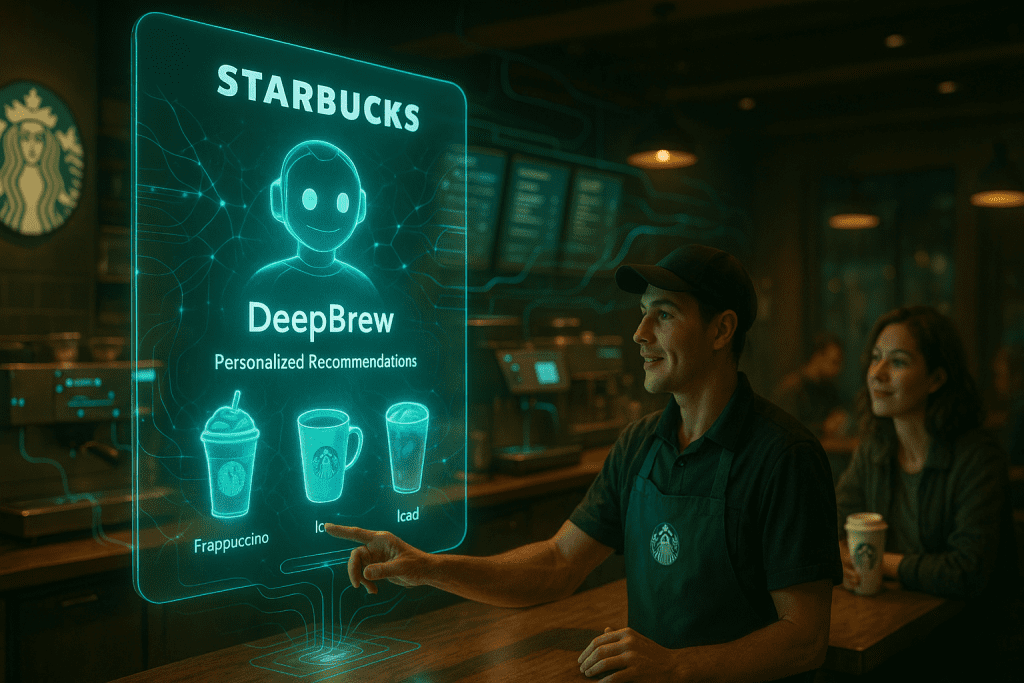
Few brands understand customer habits like Starbucks, and that’s by design.
Through its AI system called DeepBrew, Starbucks analyzes billions of data points from its app, loyalty program, and purchase history. The system predicts what a customer might want next, when they’ll likely crave it, and how to present the offer.
If you ordered a latte three mornings in a row, DeepBrew might suggest a seasonal variant right before your usual time, sometimes with a personalized discount.
The automation doesn’t stop there. AI decides when to send the push notification, what message to use, and even which image resonates best. Everything, from copy to coupon, is automated yet feels tailor-made.
Result: Starbucks reports that this AI-powered marketing automation has helped increase mobile order usage and loyalty engagement by double digits.
Lesson: Data is powerful, but timing and context are what make personalization feel human.
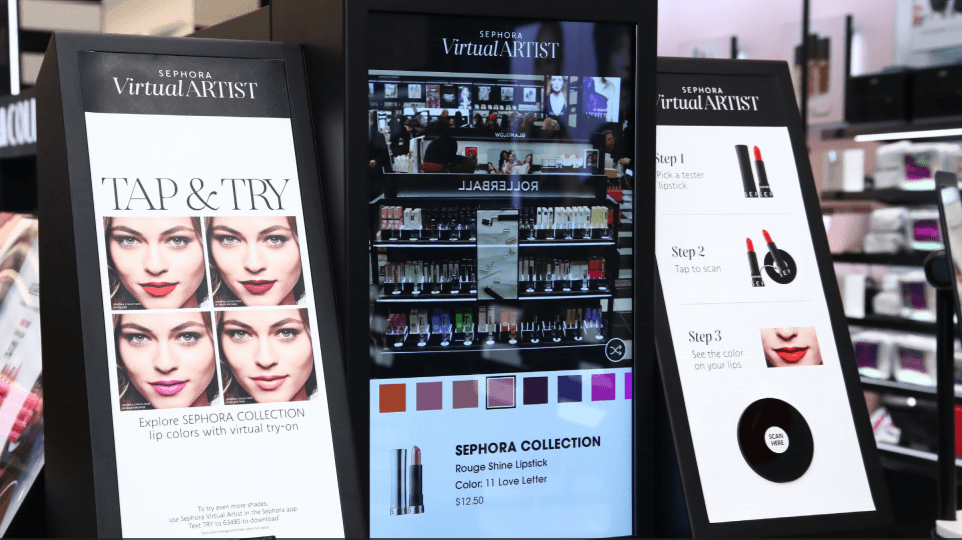
Sephora uses a mix of conversational AI and machine learning to personalize beauty recommendations for millions of users. Their Virtual Artist app scans a user’s face, analyzes skin tone, and recommends products accordingly.
Behind the scenes, AI in marketing automation runs the nurturing sequence, tracking how users engage with recommendations, which tutorials they watch, and what they eventually buy.
If a customer tries a lipstick shade in the app but doesn’t purchase, the system automatically triggers a reminder email or push message with similar shades or promotions.
Result: Sephora reported higher conversion rates and a measurable rise in repeat customers through automated follow-ups.
Lesson: AI isn’t about removing the salesperson; it’s about scaling the level of personal attention a good salesperson provides.
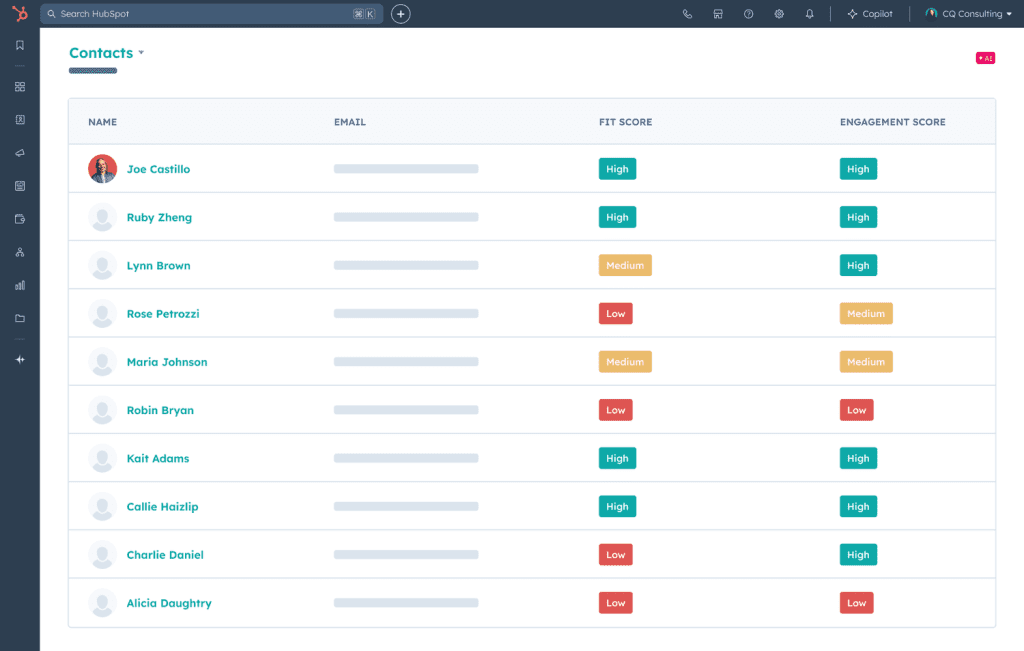
HubSpot’s own marketing team is a case study in eating their own dog food.
Their AI-powered marketing automation system uses behavioral data from tens of thousands of website visitors to prioritize leads and personalize follow-ups.
For instance, the AI analyzes factors like scroll depth, repeat visits, and time spent on pricing pages to score leads automatically. This model continuously updates. If a prospect downloads a case study or returns after two weeks, their score adjusts in real time.
Result: HubSpot reported a 25% improvement in lead-to-customer conversion after integrating predictive scoring into its workflows.
Lesson: Even established automation leaders rely on AI to make smarter, faster decisions; the principle applies to companies of any size.
Across all these examples, a pattern emerges:
These brands aren’t succeeding because they have more AI; they succeed because they have better alignment between technology, human creativity, and purpose.
AI marketing automation isn’t about replacing people; it’s about freeing them. It takes the repetitive, data-heavy side of marketing and turns it into an intelligent, self-learning process that gives humans more time to focus on strategy and storytelling. What used to take weeks of analysis now happens in real time, letting marketers shift from reacting to predicting. The real power of AI in marketing automation lies in how it transforms data into decisions, not just faster, but smarter.
But even the most advanced AI needs human direction. The best results come when empathy and automation work together, when we use AI not to control audiences, but to understand them better. As more teams experiment with AI-powered marketing automation and custom AI agents, success will come to those who combine precision with purpose. The future of AI marketing automation lies in unifying every channel, email, WhatsApp, SMS, chat, and beyond, under one intelligent, self-learning system.
Abdullah Habib is a digital marketing specialist with expertise in SEO, content marketing, social media, digital advertising, and data analysis. He excels in creating strategic, data-driven campaigns that boost organic traffic, enhance brand visibility, and drive growth for clients.